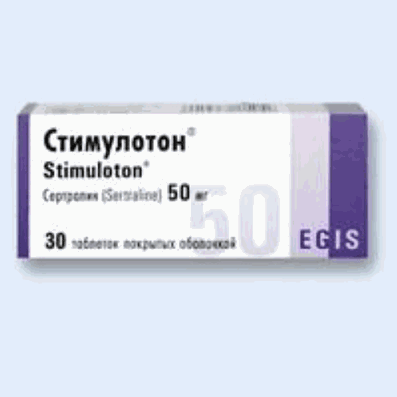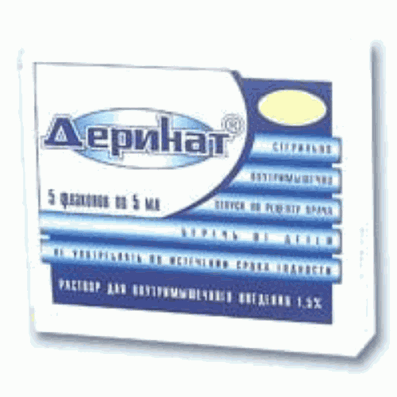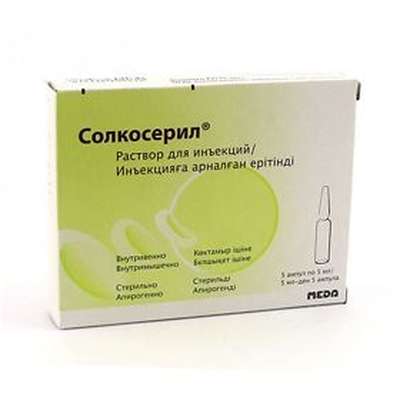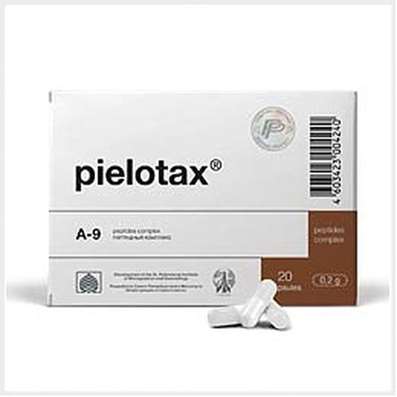Instruction for use: Candesartan-SZ
I want this, give me price
Dosage form: tablets
Active substance: Candesartanum
ATX
C09CA06 Candesartan
Pharmacological group
Angiotensin II receptor antagonist [Angiotensin II receptor antagonists (AT1-subtype)]
Nosological classification (ICD-10)
I10 Essential (primary) hypertension: hypertension; Arterial hypertension; Arterial hypertension crisis course; Essential Hypertension; Essential hypertension; Essential hypertension; Essential hypertension; Essential hypertension; Primary hypertension; Arterial hypertension, complications of diabetes; The sudden increase in blood pressure; Hypertensive disorders of blood circulation; hypertensive condition; hypertensive crises; arterial Hypertension; malignant Hypertension; Hypertonic disease; hypertensive crises; accelerated hypertension; malignant hypertension; The aggravation of hypertensive disease; Transient hypertension; Isolated systolic hypertension
I15 Secondary hypertension: Arterial hypertension, complications of diabetes; hypertension; The sudden increase in blood pressure; Hypertensive disorders of blood circulation; hypertensive condition; hypertensive crises; hypertension; arterial Hypertension; malignant Hypertension; hypertensive crises; accelerated hypertension; malignant hypertension; The aggravation of hypertensive disease; Transient hypertension; hypertension; Arterial hypertension; Arterial hypertension crisis course; renovascular hypertension; Hypertension symptomatic; Renal hypertension; Renovascular hypertension; renovascular hypertension; Symptomatic hypertension
I25.9 Chronic ischemic heart disease, unspecified: CHD; Insufficiency of coronary circulation; Coronary atherosclerosis in patients with coronary artery disease
I50.1 Left ventricular failure: Cardiac asthma; Asymptomatic dysfunction of the left ventricle; Asymptomatic left ventricular heart failure; Diastolic dysfunction of the left ventricle; Left ventricular dysfunction; Changes in the left ventricle with myocardial infarction; Left ventricular heart failure; Violation of the function of the left ventricle; Acute left ventricular failure; Acute cardiac left ventricular failure; Cardiac asthma; Heart failure of left ventricular; Changes in the lungs with left ventricular failure; Precordial abnormal pulsation; Lack of left ventricle
Composition
Tablets -1 table.
active substance: Candesartan cilexetil 8 mg; 16 mg; 32 mg
Auxiliary substances: lactose monohydrate (milk sugar) - 39.1 / 64.8 / 78 mg; MCC - 41/68/74 mg, pregelatinized starch (starch 1500) - 20/32/40 mg; Croscarmellose sodium (impellosis) - 4/6/8 mg; Povidone (PVP medium-molecular) - 6/10/14 mg; Silicon dioxide colloid (aerosil) - 0.7 / 1.2 / 1.5 mg; Sodium stearyl fumarate 1.2 / 2 / 2.5 mg
Description of dosage form
Tablets: white or almost white color round planar, with a facet and a risk.
Pharmachologic effect
Mode of action - antihypertensive.
Pharmacodynamics
Angiotensin II is the main hormone of RAAS, which plays an important role in the pathogenesis of arterial hypertension, heart failure and other cardiovascular diseases. The main physiological effects of angiotensin II are vasoconstriction, stimulation of aldosterone production, regulation of water-electrolyte homeostasis and stimulation of cell growth. All these effects are mediated by the interaction of angiotensin II with angiotensin receptor type 1 (AT1 receptors).
Candesartan is a selective antagonist of AT1 receptors. Candesartan does not inhibit ACE which converts angiotensin I into angiotensin II and breaks down bradykinin; Does not affect the ACE and does not lead to the accumulation of bradykinin or P. In comparing candesartan with ACE inhibitors, the development of cough was less common in patients receiving candesartan cilexetil. Candesartan does not bind to the receptors of other hormones and does not block the ion channels involved in the regulation of CCC functions. As a result of blocking of AT1-receptors of angiotensin II, a dose-dependent increase in the activity of renin, angiotensin I, angiotensin II, and a decrease in aldosterone in the blood plasma.
Arterial hypertension
With arterial hypertension candesartan causes a dose-dependent long-term decline in blood pressure. The antihypertensive effect of the drug is due to a decrease in OPSS, without a change in heart rate. There were no cases of severe arterial hypotension after taking the first dose of the drug, as well as withdrawal syndrome ("ricochet" syndrome) after discontinuation of therapy. The onset of antihypertensive action after taking the first dose of candesartan cilexetil usually develops within 2 hours. Against the background of continuing therapy with the drug at a fixed dose, the maximum reduction in blood pressure is usually achieved within 4 weeks and persists throughout the treatment. Candesartan tsileksetil, prescribed once a day, provides an effective and smooth decrease in blood pressure within 24 hours with minor fluctuations in blood pressure in the intervals between doses of the next dose of the drug. The use of candesartan cilexetil together with hydrochlorothiazide leads to an increase in antihypertensive action. The combined use of candesartan cilexetil and hydrochlorothiazide (or amlodipine) is well tolerated. The effectiveness of the drug does not depend on the age and sex of patients. Candesartan cilexetil increases renal blood flow and does not change or increases the rate of glomerular filtration, whereas renal vascular resistance and filtration fraction decrease. The administration of candesartan cilexetil at a dose of 8-16 mg for 12 weeks does not adversely affect glucose concentration and lipid profile in patients with hypertension and type 2 diabetes mellitus.
CHF
In patients with CHF and reduced left ventricular systolic function (LVEF ≤40%), candesartan administration contributed to a reduction in OPSS and capillary pressure in the lungs, an increase in renin activity and an angiotensin II concentration in blood plasma, and a decrease in aldosterone levels.
Pharmacokinetics
Suction and distribution. Candesartan cilexetil is a prodrug for oral administration. Rapidly turns into an active substance - candesartan - by ether hydrolysis when absorbed from the digestive tract, firmly binds to the AT1 receptors and dissociates slowly, does not have the properties of an agonist. Absolute bioavailability of candesartan after oral administration of a solution of candesartan cilexetil is about 40%. The relative bioavailability of the tablet preparation as compared to the oral solution is approximately 34%. Thus, the calculated absolute bioavailability of the tablet form of the drug is 14%. Cmax in the blood serum is achieved 3-4 hours after taking the tablet form of the drug. With an increase in the dose of the drug within the recommended limits, the concentration of candesartan rises linearly. The pharmacokinetic parameters of candesartan do not depend on the sex of the patient. Eating does not have a significant effect on AUC, i.e. Simultaneous intake of food does not significantly affect the bioavailability of the drug. Candesartan actively binds to blood plasma proteins (> 99%). Vd candesartan is 0.1 l / kg.
Metabolism and excretion. Candesartan is mainly excreted from the body by the kidneys and bile in unchanged form and only marginally metabolized in the liver. T1 / 2 candesartan is approximately 9 hours. Cumulation in the body is not observed. Candesartan has a total clearance of about 0.37 ml / min / kg, with a kidney clearance of about 0.19 ml / min / kg. Renal excretion of candesartan is carried out by glomerular filtration and active tubular secretion. When ingestion of radiolabeled candesartan cilexetil, about 26% of the administered amount is excreted by the kidneys in the form of candesartan and 7% - in the form of an inactive metabolite, whereas in the feces 56% of the administered amount in the form of candesartan and 10% in the form of an inactive metabolite is detected.
Special patient groups
Elderly patients. In elderly patients (over 65 years) Cmax and AUC candesartan increase by 50 and 80%, respectively, compared with these indicators in young patients. However, the antihypertensive effect and incidence of side effects with Candesartan-SZ do not depend on the age of the patients.
Impaired renal function. In patients with mild to moderate renal impairment, Cmax and AUC of candesartan increased by 50% and 70%, respectively, whereas T1 / 2 of the drug did not change compared to those in patients with normal renal function. In patients with severe renal dysfunction, Cmax and AUC of candesartan increased by 50% and 110%, respectively, and T1 / 2 of the drug increased 2-fold. Patients on hemodialysis were found to have the same pharmacokinetic parameters of candesartan as in patients with severe renal dysfunction.
Violation of the function of the liver. In patients with mild and moderate impairment of liver function, AUC of candesartan was increased by 23%.
Indications of the drug Candesartan-SZ
Arterial hypertension in adults. The drug Candesartan-SZ can be used in monotherapy or in combination with other antihypertensive drugs;
Chronic heart failure (NYHA class II-IV functional class) in adult patients with left ventricular systolic dysfunction (LVEF reduction ≤ 40%). The drug Candesartan-SZ is used as an additional therapy for ACE inhibitors or for intolerance to ACE inhibitors (see Pharmacodynamics).
Contraindications
Increased sensitivity to candesartan cilexetil or other components included in the preparation;
Severe liver dysfunction and / or cholestasis;
Intolerance to galactose, a deficiency of lactase and a syndrome of glucose-galactose malabsorption;
Simultaneous use with aliskiren and aliskiren-containing drugs in patients with diabetes mellitus or renal dysfunction (glomerular filtration rate <60 ml / min / m2) (see "Interaction");
Pregnancy and the period of breastfeeding (see "Application in pregnancy and lactation");
Age to 18 years (effectiveness and safety not established).
With caution: severe renal failure (Cl creatinine less than 30 mL / min); Bilateral stenosis of the renal arteries or stenosis of the artery of a single kidney; Hemodynamically significant stenosis of the aortic and mitral valve; A condition after a kidney transplant in the anamnesis; Cerebrovascular disease and ischemic heart disease; Hyperkalemia; Reduced BCC; Primary hyperaldosteronism (there is insufficient data on clinical studies); Hypertrophic cardiomyopathy.
Application of pregnancy and breastfeeding
The use of Candesartan-SZ during pregnancy is contraindicated (see "Contraindications"). Patients taking Candesartan-SZ should be warned about this before planning a pregnancy so that they can discuss alternative therapies with their own doctor. In the event of pregnancy, therapy with Candesartan-SZ should be immediately discontinued and, if necessary, an alternative treatment is prescribed. Drugs that have a direct effect on RAAS may cause fetal developmental disorders or have a negative effect on the newborn, up to a lethal outcome, when the drug is used during pregnancy. It is known that therapy with angiotensin II receptor antagonists can cause developmental disorders of the fetus (renal dysfunction, oligohydramnion, slowing ossification of the skull bones) and development of complications in the newborn (kidney failure, arterial hypotension, hyperkalemia).
Now it is not known whether candesartan penetrates into breast milk. In connection with the possible undesirable effect on infants, Candesartan-SZ should not be used during breastfeeding.
Side effects
Arterial hypertension
Side effects in clinical trials were mild and transient and were comparable in frequency with the placebo group. The overall incidence of side effects associated with Candesartan-SZ was independent of the dose, sex and age of the patient. The incidence of discontinuation due to side effects was similar when using candesartan cilexetil (3.1%) and placebo (3.2%). During the analysis of these studies, the following side effects were reported, often (> 1/100) occurring against the background of administration of candesartan cilexetil. The described side effects were observed with a frequency of at least 1% more than in the placebo group.
From the side of the central nervous system: dizziness, weakness, headache.
From the osteomuscular system, connective tissue: back pain.
Infections: Respiratory infections.
Laboratory indices: in general, when applying Candesartan-SZ, clinically significant changes in standard laboratory parameters were not noted. As with other RAAS inhibitors, a slight decrease in hemoglobin can be observed. There was an increase in the concentration of creatinine, urea or calcium and a decrease in the concentration of sodium. The increase in ALT activity was noted somewhat more often when using Candesartan-SZ in comparison with placebo (1.3% instead of 0.5%). When using Candesartan-C3, regular monitoring of laboratory parameters is not usually required. However, in patients with impaired renal function, it is recommended to periodically monitor the concentration of potassium and creatinine in the blood serum.
CHF
Side effects, revealed against the background of the use of the drug Candesartan-SZ in patients with CHF, corresponded to the pharmacological properties of the drug and depended on the patient's condition.
The following side effects were most common (≥1 / 100, <1/10).
From the CVS: a marked decrease in blood pressure.
Disturbance of metabolism and diseases caused by a metabolic disorder: hyperkalemia.
On the part of the urinary system: a violation of kidney function.
Laboratory changes: increased concentration of creatinine, urea and potassium. It is recommended to monitor the concentration of creatinine and potassium in the blood serum.
About the following side effects during the postmarketing use of the drug reported very rarely (<1/10000).
From the blood and lymphatic system: leukopenia, neutropenia and agranulocytosis.
Disturbance of metabolism and diseases caused by a metabolic disorder: hyperkalemia, hyponatremia.
From the nervous system: dizziness, headache.
On the part of the respiratory system, the organs of the thorax and the mediastinum: cough.
From the digestive tract: nausea.
From the liver and biliary tract: increased activity of liver enzymes, a violation of liver function or hepatitis.
From the skin: angioedema, rash, hives, itching.
From the musculoskeletal system, connective tissue: back pain, arthralgia, myalgia.
On the part of the urinary system: a violation of kidney function, including renal failure in predisposed patients. Rare reports of rhabdomyolysis have been reported in patients receiving angiotensin II receptor antagonists.
Interaction
When using Candesartan-SZ with hydrochlorothiazide, warfarin, digoxin, oral contraceptives (ethinyl estradiol / levonorgestrel), glibenclamide, nifedipine, and enalapril, clinically significant PCV was not detected.
Candesartan is metabolized in the liver to an insignificant degree (isoenzyme CYP2C9). The conducted studies on the interaction did not reveal the effect of the drug on the isozymes CYP2C9 and CYP3A4, the effect on other isoenzymes of the cytochrome P450 system has not been studied.
The combined use of Candesartan-SZ with other antihypertensive drugs potentiates antihypertensive action.
The experience of using other drugs that act on RAAS shows that concomitant therapy with potassium-sparing diuretics, potassium preparations, salt substitutes containing potassium, and other agents that can increase serum potassium concentration (eg heparin) can lead to hyperkalemia.
With the combined use of lithium preparations with ACE inhibitors, a reversible increase in serum lithium concentration and the development of toxic reactions were reported. Similar reactions can occur with the use of angiotensin II receptor antagonists, and therefore it is recommended to monitor the concentration of lithium in the serum when combined with these drugs.
With the combined use of angiotensin II receptor antagonists and NSAIDs, incl. Selective inhibitors of COX-2, acetylsalicylic acid, there may be a decrease in antihypertensive action. As with the use of ACE inhibitors, the combined use of angiotensin II receptor antagonists and NSAIDs may increase the risk of renal dysfunction, including acute renal failure, an increase in serum potassium concentration, especially in patients with reduced renal function. Caution should be exercised in the joint use of these drugs, especially in elderly patients and in patients with reduced BCC. Patients need to compensate for fluid loss and closely monitor kidney function after initiating combination therapy and periodically - against such therapy.
The bioavailability of candesartan is not dependent on food intake.
Contraindicated simultaneous use with aliskiren in patients with diabetes mellitus and renal failure (glomerular filtration rate less than 60 ml / min).
Dosing and Administration
Inside. 1 time per day, regardless of food intake.
Arterial hypertension in adult patients
The recommended initial and maintenance dose of Candesartan-SZ is 8 mg once a day. The dose can be increased to 16 mg once a day. Patients who failed to sufficiently reduce blood pressure after 4 weeks of taking Candesartan-SZ in a dose of 16 mg / day, it is recommended to increase the dose to 32 mg once a day. In the event that therapy with Candesartan-SZ does not lead to a decrease in blood pressure to the optimal level, it is recommended to change the treatment regimen. Therapy should be adjusted in accordance with the level of blood pressure. The maximum antihypertensive effect is achieved within 4 weeks from the start of treatment.
Patients of advanced age. In elderly patients, there is no need to adjust the initial dose of the drug.
Impaired renal function. The initial daily dose in patients with mild or moderate renal impairment (Cl creatinine ≥30 mL / min / 1.73 m2), including patients on hemodialysis, is 4 mg (1/2 tablets of 8 mg). The clinical experience of the drug in patients with severe renal impairment (Cl creatinine <30 ml / min / 1.73 m2) or terminal renal failure (Cl creatinine <15 ml / min) is limited.
Violation of the function of the liver. The initial daily dose in patients with mild and moderate impairment of liver function is 4 mg once a day (1/2 tablets of 8 mg). Clinical experience of the drug in patients with severe impairment of liver function and / or cholestasis is limited (see "Contraindications").
Concomitant therapy. The use of Candesartan-SZ together with thiazide type diuretics (eg hydrochlorothiazide) can enhance the antihypertensive effect of Candesartan-SZ.
Hypovolemia. The recommended initial dose of Candesartan-SZ is 4 mg once a day (1/2 tablets of 8 mg).
CHF
The recommended initial dose of Candesartan-SZ is 4 mg once a day (1/2 tablets of 8 mg). Increasing the dose to 32 mg once a day or up to the maximum tolerated dose is done by doubling it at intervals of not less than 2 weeks (see "Special instructions").
Elderly patients and patients with impaired renal, hepatic or hypovolemic function do not need to change the initial dose of the drug.
Concomitant therapy. Candesartan-SZ can be administered together with other agents used in the treatment of CHF, for example with ACE inhibitors, beta-blockers, diuretics and cardiac glycosides (see "Special instructions", "Pharmacodynamics").
Overdose
Symptoms: an analysis of the pharmacological properties of the drug suggests that the main manifestation of an overdose may be a clinically pronounced decrease in blood pressure, dizziness and tachycardia, and bradycardia may also appear. Individual cases of drug overdose (up to 672 mg of candesartan cilexetil), which resulted in the recovery of patients without severe consequences, were described.
Treatment: with the development of clinically pronounced arterial hypotension, it is necessary to carry out symptomatic treatment and monitor the patient's condition. Lay the patient, raise the bed in the legs. If necessary, the BCC should be increased, for example by intravenous administration of a 0.9% solution of sodium chloride. If necessary, sympathomimetic preparations may be prescribed. The withdrawal of candesartan by hemodialysis is unlikely.
Special instructions
Impaired renal function
Against the background of therapy with Candesartan-SZ, as with the use of other drugs that oppress RAAS, some patients may have renal dysfunction.
When using Candesartan-SZ in patients with arterial hypertension and severe renal failure, it is recommended to periodically monitor the concentration of potassium and creatinine in the blood serum. Clinical experience of the drug in patients with severe renal dysfunction or terminal stage of renal failure (Cl creatinine <15 ml / min) is limited.
Patients with CHF need periodic monitoring of kidney function, especially in patients aged 75 years and older, as well as in patients with impaired renal function. When the dose of Candesartan-SZ is increased, it is also recommended to monitor the concentration of potassium and creatinine.
Clinical studies of CHF did not include patients with a creatinine concentration> 265 μmol / L (> 3 mg / dL).
Co-administration with ACE inhibitors in CHF
When using candesartan in combination with ACE inhibitors, the risk of side effects may increase, especially kidney function and hyperkalemia (see "Side effects"). In these cases, careful monitoring and monitoring of laboratory indicators is necessary.
Stenosis of the renal artery
In patients with bilateral renal artery stenosis or stenosis of the artery of a single kidney, drugs that affect RAAS, in particular ACE inhibitors, can cause an increase in the concentration of urea and creatinine in the serum. Similar effects can be expected with the appointment of angiotensin II receptor antagonists.
Kidney transplantation
Data on the use of Candesartan-SZ in patients who underwent kidney transplantation are limited.
Arterial hypotension
In patients with CHF on the background of therapy with Candesartan-SZ, arterial hypotension may develop. As with the use of other drugs that affect RAAS, the cause of the development of arterial hypotension in patients with hypertension may be a decrease in BCC, as observed in patients receiving high doses of diuretics. Therefore, at the beginning of therapy, care should be taken and, if necessary, correct hypovolemia.
Double blockade of RAAS with the use of preparations containing aliskiren
It is not recommended to double blockade of RAAS by combining candesartan cilexetil and aliskiren, in view of the increased risk of arterial hypotension, hyperkalemia and changes in renal function.
The use of candesartan cilexetil in combination with aliskiren is contraindicated in patients with diabetes mellitus (type 1 or 2) or moderate or severe renal failure (glomerular filtration rate <60 ml / min / m2) (see Contraindications).
General anesthesia and surgery
Patients receiving angiotensin II antagonists may develop arterial hypotension as a result of blockade of RAAS during general anesthesia and during surgical interventions. Very rarely there can be cases of severe arterial hypotension, requiring intravenous fluids and / or vasopressors.
Stenosis of the aortic and mitral valve or obstructive hypertrophic cardiomyopathy
Caudesartan-SZ, like other vasodilators, should be used with caution in patients with obstructive hypertrophic cardiomyopathy or hemodynamically significant stenosis of the aortic or mitral valve.
Primary hyperaldosteronism
Patients with primary hyperaldosteronism are usually resistant to therapy with antihypertensive drugs that affect RAAS. In this regard, the drug Kandesartan-SZ is not recommended to appoint such patients.
Hyperkalemia
The clinical experience of using other drugs that affect RAAS shows that simultaneous administration of Candesartan-SZ with potassium-sparing diuretics, potassium preparations or salt substitutes containing potassium, or other drugs that can increase the potassium content in the blood (for example, heparin) can lead To the development of hyperkalemia in patients with arterial hypertension. Patients with CHF on the background of therapy with Candesartan-SZ can develop hyperkalemia. When prescribing Candesartan-SZ, patients with CHF are advised to regularly monitor potassium levels in the blood, especially when co-administered with ACE inhibitors and potassium-sparing diuretics such as spironolactone.
Are common
Patients in whom vascular tone and renal function predominantly depend on the activity of RAAS (for example, patients with severe CHF or kidney disease, including renal artery stenosis) are particularly sensitive to drugs acting on RAAS. The appointment of such drugs is accompanied in these patients by severe arterial hypotension, azotemia, oliguria and, more rarely, acute renal failure. The possibility of developing these effects can not be ruled out when using angiotensin II receptor antagonists. A sharp decrease in blood pressure in patients with ischemic heart disease or cerebrovascular diseases of atherosclerotic genesis with the use of any antihypertensive drugs can lead to the development of myocardial infarction or stroke.
Influence on the ability to drive vehicles and work with machinery. Influence on the ability to drive vehicles or work with machinery has not been studied, but the pharmacodynamic properties of the drug indicate that such an effect is absent. When driving vehicles and practicing potentially dangerous activities that require a high concentration of attention and speed of psychomotor reactions, it should be borne in mind that when using the drug, dizziness and fatigue can occur.
Release form
Tablets, 8 mg, 16 mg and 32 mg. In the outline of the cell, 10, 14 or 30 pcs. In a polymer can or in a polymer bottle, 20 pcs. Each bank or vial, 3, 6 contour cellular packs of 10 tables, 2, 4 contourcell packs of 14 tablets. Or 1, 2 contourcell packs of 30 tablets. In a cardboard box.
Conditions of supply of pharmacies
On prescription.
Storage conditions of the drug Candesartan-SZ
In a dry, the dark place at a temperature of no higher than 25 ° C.
Keep out of the reach of children.
The shelf life of the drug Candesartan-SZ
3 years.
Do not use beyond the expiration date printed on the package.

 Cart
Cart





